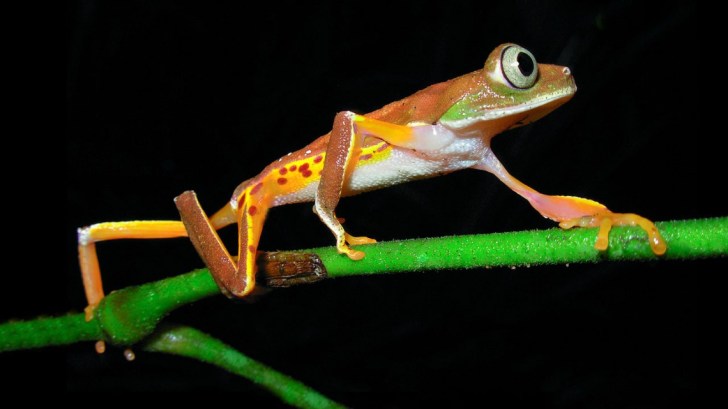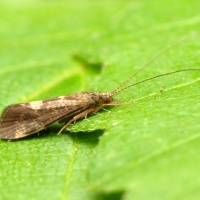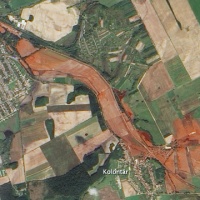‘Lost’ Brazilian frogs rediscovered with environmental DNA

Scientists have used cutting-edge DNA techniques to identify the presence of a Brazilian frog species not seen since 1968, and thought to be extinct.
Organisms leave DNA traces in soil, water and air in their habitats, and this ‘environmental DNA’ (or eDNA) can increasingly be sampled and matched to reference databases. So, even if researchers don’t see or hear a particular species, they can identify the eDNA ‘footprint’ it leaves behind in an environment.
The ‘lost’ frog, Megaelosia bocainensis, was one of seven frog species – including four other declining species, and two that had disappeared locally – that were detected by the new study, published in Molecular Ecology.
The research team collected and analysed frog eDNA from stream and pond water at five sites in the biodiverse Atlantic Coastal Forest and Cerrado grasslands in southeastern Brazil. They were looking for 13 frog species that are presumed extinct; 12 species that have disappeared locally; and five species that were once abundant but are now scarce.
“Little bits of DNA in the environment don’t tell us about how many individuals there are or whether those individuals are healthy, but it does tell us that the species is still present,” said senior author Kelly Zamudio, the Goldwin Smith Professor of Ecology and Evolutionary Biology in the College of Arts and Sciences at Cornell University.
“This is one more kind of survey data, and for species that are declining or locally disappeared, it not only means they are there, but there’s now the potential to study them in more detail,” Zamudio added.

The researchers then extracted the eDNA from their water samples and genetically sequenced it. This allowed them to isolate frog eDNA from that of humans, pigs, chickens and other organisms which share the environment.
“Now you’ve got a subset of genetic sequences that we know only belong to frogs, and then it’s step by step, going finer and finer, until you get to the genus and species you are looking for,” Zamudio said.
Because Megaelosia bocainensis has not been seen for over 50 years, the research team didn’t have tissue samples to extract DNA from for comparison with their eDNA samples. However, they did have the genetic sequences for the frog’s sister species in the genus Megaelosia.
“We know there’s a Megaelosia there,” Zamudio said, “we just don’t know which one it is, but the only one that has ever been reported there historically is the one that went missing. Do we believe it? That’s how far the analysis can take us.”
Using eDNA techniques allows scientists to search for traces of such elusive species at low population densities. It offers rich potential in characterising species geographic ranges, population fluctuations and conservation status. It is already being used to track the spread of invasive species through freshwater ecosystems, such as Asian carp in the USA.
The discovery of the Megaelosia eDNA in the water samples clearly signals the need for more targeted amphibian research and conservation efforts in the region. How many more ‘lost’ freshwater species are still out there, quietly persisting in tiny numbers, despite multiple human pressures and threats? Could eDNA techniques help conservationists better identify and protect these species in the future?
+++















Comments are closed.